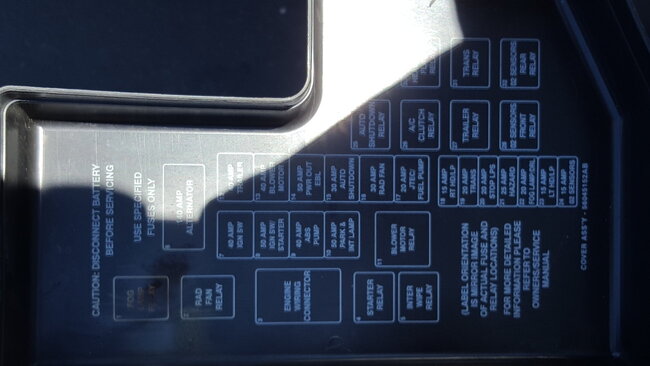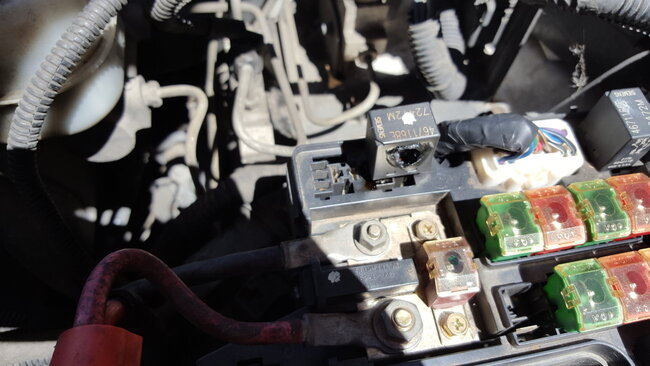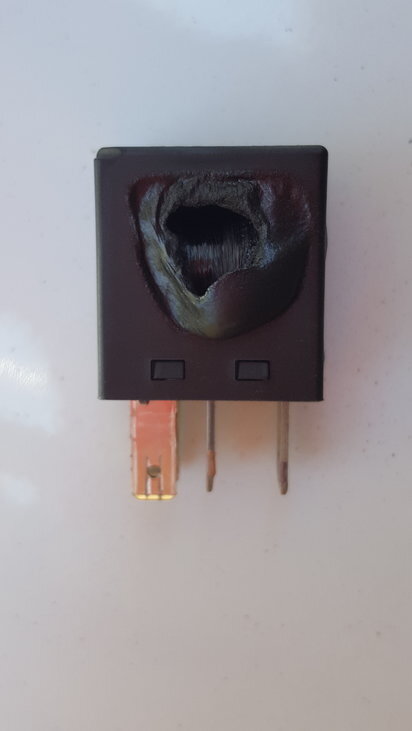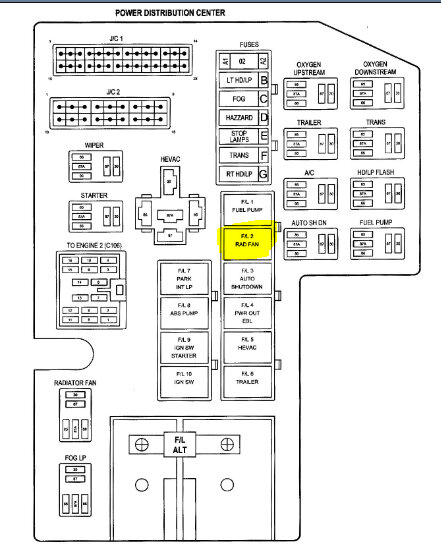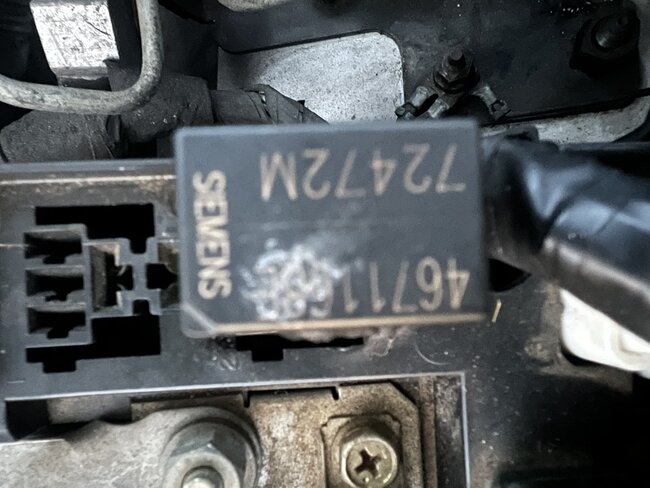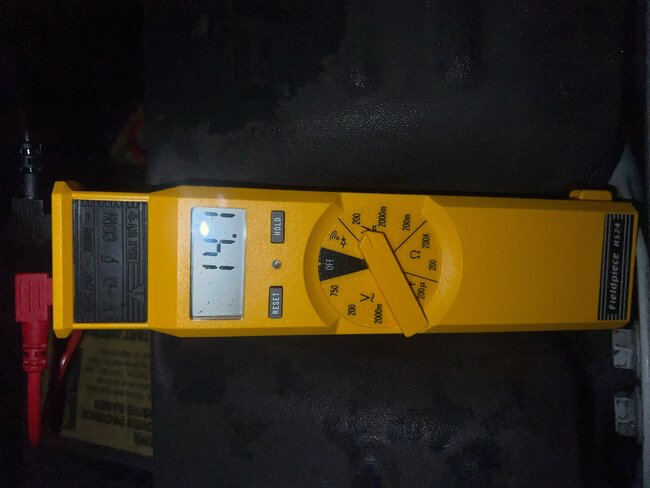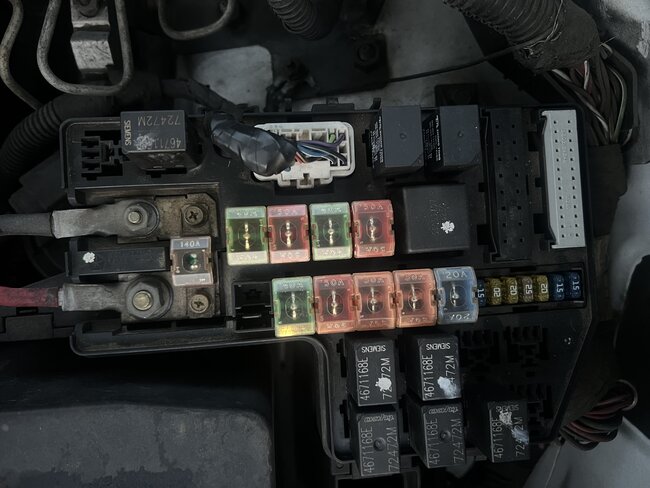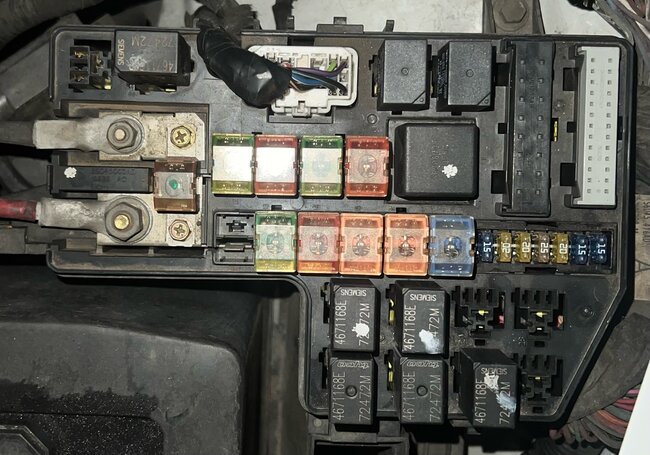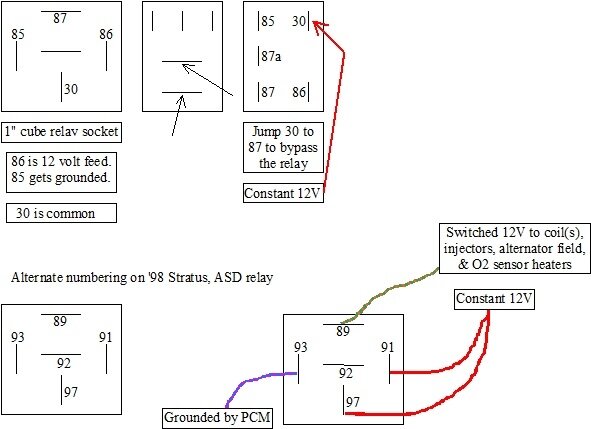Hi guys. I've been waiting to learn the solution, but in the meantime, please allow me to add a few comments. Rewiring what the engineers designed is not the answer. If that were the case, every truck would have this problem and there would have been a recall to address it.
I think Joe had the answer in the first reply, about the fan motor drawing too much current. It's not uncommon to see overheated terminals in high-current circuits like ignition switches, heater fan switches, and relay sockets. There's multiple causes, but in this case, with a badly overheated relay, it's more likely due to excessive arcing across the contacts. That arcing occurs when very high current is switched off.
The other thing to look for, especially when someone complains of multiple repeat failures, is the heat from poor relay contacts or poor switch contacts will migrate out and degrade the connector terminals, usually to the point it melts the surrounding plastic connector body. Likewise, that bad connection can occur between a pair of mating connector terminals, then the heat generated can migrate into the switch or relay causing those contacts to overheat and start a new failure. Both the switch or relay, and the mating terminals must be replaced at the same time, otherwise the problem will continue to recur.
I have a suspicion the original failure was caused by a tight radiator fan motor. Without going into unnecessary detail, the more a motor is loaded down, the more current it will draw. Radiator fan motors typically draw around 15 amps. That's more than the typical switching transistors inside computers like to handle, so they use a relay instead. The Engine Computer is only supplying a tiny fraction of an amp to turn on the relay. After that, it has no idea how much current that relay is passing. That's why Joe also couldn't understand the need to replace the computer. Given the really excessive heat generated inside the relay, it's almost certain the contacts arced so many times, they welded themselves together. It's the stuck relay that kept the fan running, not the computer keeping the relay turned on. Terminals arced together like that do not create a nice solid connection, so more heat is generated, as happened here.
I see you did replace the fan motor already. Was that a new one or a used one from a salvage yard? If it was a used one, it might also have tight bearings, but more than likely, the cause of the repeat failures was never addressed, that being the terminals in the relay socket. As badly as that first relay was overheated, it's a good bet the terminals in the socket are blackened or discolored. If you see that, I would address that the same way I do ignition switch connectors. You only need to look at the two terminals for the high-current switched side of the relay. Those will be the two fatter wires in the socket. I also put this drawing together to show them.
You can harvest a pair of terminals with a few inches of wire at a salvage yard, or, I use a new pair of universal spade terminals. Those work better for ignition switches. The job will be easier for you if you can get the old terminals out and the new ones to plug in solidly. If not, when the plastic is badly melted, cut all of it away around those two terminals. When the terminals got hot enough to discolor, the wires are going to be hardened for about the first four inches. Solder won't adhere to that, so cut those first few inches away too. This is why you want to get a good four to five inches of wire with terminals you get from a salvage yard.
With new terminals, splice in the four inches of new wire of the same gauge, solder the splices, then seal them with heat-shrink tubing. Never use electrical tape in a vehicle as it will unravel into a gooey mess on a hot day. Crimp the universal spade terminals to the new wires, but solder them too for the best connection. If the relay box is still okay, plug those original-style terminals into the socket and the repair is done. If the plastic had to be cut away, and / or you're using universal replacement terminals, those will have to be plugged into the relay individually. Consider squeezing them first so they make a really solid contact. For a relay, you might need to make that six or seven inches of new wire so they can be pushed up through the socket. That leaves you something to grab onto when plugging them in separately. Then push the relay into the socket so the other two terminals can plug in.
That gets the circuit working, but I wouldn't consider the repair completed yet. To ensure it's working properly, make the computer operate the relay to verify the fan runs. You can wait and wait and wait for the idling engine to heat up, or use a scanner to command the radiator fan relay on, or a simple trick is to unplug the coolant temperature sensor. It will have two wires in its connector, and will be on or near the thermostat housing at the end of the upper radiator hose. Unplugging it causes the computer to turn on the fan relay because it won't know engine temperature. It does that in case it's getting too hot. This will set a diagnostic fault code and turn on the Check Engine light, but that code will self erase after 50 engine restarts. The relay will turn off a few seconds after the coolant temperature sensor is reconnected, and the Check Engine light should be off the next time the engine is restarted. On a few models it turns off right away while the engine is running. By the way, when unplugging the sensor, the engine doesn't have to be running. You just need to have the ignition switch in "run".
For the last step, when the relay switches off, watch how long the fan takes to coast to a stop. If it stops instantly or within a couple of seconds, it has tight bearings and the same problem is going to occur. The fan should coast for a good three to five seconds. Finally, I would really want to know how much current the fan motor is drawing. You'll need an amp meter that can measure at least up to 20 amps. If you have an older direct meter that gets inserted in series into one of the motor's wires, you can do that right at one of the new terminals you just installed, before you plug it into the relay. There will be some minor sparking at the last probe to be connected, then the motor will start running. It occurs too quickly to see, but it takes about 20 to 25 amps to get the motor started, then it will drop down to the reading we want to see within a fraction of a second. If you find it's around 15 amps or less, I'd consider the job done.
This type of amp meter can be inserted anywhere in either wire, including right at the motor's connector, but it's hard to find amp meters today that can read that high. Most amp meter functions on today's multimeters can only read to five or ten amps. Trying to read higher values can damage the meter or blow its internal fuse. The best alternative is to use a meter with an inductive pickup. Those clamp around a wire just like we used to do with timing lights on spark plug wires. You may need to visit a mechanic for this. They have professional charging system load testers that use an inductive pickup. Those are accurate enough for this circuit. If you have access to such a tester, remember it must be clamped around just one wire. There's at least two wires at the motor. If you clamp around both of them, the current going one way through one wire will be offset by the current going the other way through the other wire. Current has to be the same value in both wires, so the tester will see the sum of the two, or 0 amps.
Hope that helps. I'll be waiting to learn the final solution.
Image (Click to make bigger)
Monday, February 6th, 2023 AT 3:11 PM
